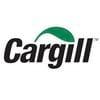I. INTRODUCTION
The laying hen has a considerable requirement for dietary calcium (Ca) and phosphorus (P) to support optimum egg production, egg quality and other physiological processes. In particular, a high intake of Ca ranging from 4 to 4.5% of the diet is considered important as the laying cycle progresses from early to late lay to achieve optimum egg number and egg shell quality. A capacity for birds to increase Ca intake from a separate Ca source as dietary Ca levels diminish has been observed (Wilkinson et al., 2011). The ability of the hen to regulate Ca intake may be utilised to support optimum productivity and egg quality. There is markedly less focus on P requirements in layers outside of research concerning phytase. The relatively fewer studies with a strong focus on P likely reflects the greater importance placed on Ca intake for egg and egg shell optimisation, despite close interaction of Ca and P in the mineralisation processes. The requirements for Ca and P by the laying hen must be considered in tandem due to their interaction and the tendency for Ca to complex with phytate which impedes the digestibility and hence availability of Ca and to a greater extent P. Commercially, laying hens are fed a single mixed diet that is formulated to meet all of the nutritional requirements of the bird to support optimum performance. However, a single mixed diet enables birds to primarily exercise their appetite for energy (Henuk and Dingle 2002). This can result in some laying hens having to rely on their medullary bone reserves for minerals, leading to a decrease in egg production, egg quality and the development of osteoporosis. The ability to exploit Ca regulated intake of laying hens may permit a lower dietary Ca component in the diet and allow the birds to consume Ca separately to meet their individual requirements. Allowing birds to self-regulate their Ca intake may also aid in increasing the digestion of P and phytate-P. This study investigated the presence of Ca specific appetite of layers and whether this appetite is extended to P. Additionally, the potential for layers to manipulate their Ca and P intake to improve feed efficiency and egg quality was investigated.
II. METHODS AND MATERIALS
All experimental procedures conducted had approval from The University of Sydney Animal Ethics Committee and were in accordance with the Australian Code for the care and use of animals for scientific purposes (National Health and Medical Research Council, 2013). Birds were offered experimental diets based on wheat-soybean meal (11.7 MJ/kg AME) that comprised three nutrient densities of low, medium and high values of total Ca plus avP (30, 40 and 50 g/kg respectively) and within each density, two ratios of dietary Ca:avP (15.7:1 and 6.1:1). ISA Brown hens were housed separately in cages with three adjacent cages forming the replicate unit (six replicates of three birds per replicate) and fed for 8 weeks on a choice of two diets which were selected to provide a choice of high or low dietary Ca:avP and/or dietary Ca and avP concentrations as shown in Table 1. Egg quality, feed intake and feed:egg conversion efficiency were assessed weekly over an 8 week period. Experimental data were analysed as a one-way ANOVA of dietary treatments using the IBM® SPSS® Statistics 20 program (IBM Corporation. Somers, NY USA). Treatment differences were considered significant at P < 0.05.
III. RESULTS
The effect of choice feeding of three combinations of two diets, varying in Ca and avP concentrations and ratios, on intake and egg quality are shown in Table 1. Total feed intake averaged 120 g/bird/day over the 8 week trial period and did not differ significantly between treatments. Average daily feed intake of diets within a choice treatment were the same in treatment 1 and treatment 3 while birds in treatment 2 consumed 65% more of high Ca+P/low Ca:P diet (HD/LR) than the low Ca+P/high Ca:P diet (LD/HR; P < 0.001). Intakes of Ca and P were significantly different between choice treatment and diets (P < 0.001) where Ca intake increased linearly with higher dietary Ca (r = 0.9912, P < 0.001) and P intake increased linearly with higher dietary P (r = 0.8274, P = 0.0421). However, the linear relationship between dietary Ca and Ca intake was diminished at the choice treatment level where overall Ca intake was equal across the three choice treatments. Birds offered a high Ca + avP density diet (5% Ca + avP; HDR and HD/LR diet) alongside a low density diet (3% Ca + avP; LDR and LD/HR diet) consumed more Ca and P from the high density diet by a factor of 3.35 and 1.34, respectively, while birds in choice treatment 3 had a similar Ca and P intake of both medium Ca + avP density diets (4% Ca + avP; MD/HR and MD/LR diet). Ultimately, intake of total Ca did not differ between choice treatments where birds consumed a daily average of 4.68g Ca. As a consequence, total P intake and Ca:P intake ratios were dissimilar between treatments (P < 0.001). Choice treatment 2 acquired the highest P intake of 53.6 g and the lowest Ca:P intake ratio of 4.9:1. Choice feeding did not have an effect on egg FCR or egg quality, with the exception of choice treatment 2 producing significantly inferior albumen height and Haugh unit compared to the other choice treatments. This treatment also obtained significantly lower Ca:avP intake.
Table 1 - The effect of choice feeding of two diet combinations varying in dietary Ca and avP concentrations and ratios on average daily feed intake, total feed intake and egg quality at 8 weeks.
Figure 1 - Linear relationship between egg weight and total P intake in week 8 of experimental period (r = 0.533, P < 0.03).
IV. DISCUSSION
Based on total intakes of Ca and P from the combined consumption of the two diets, it appears birds were defending a Ca target (range 4.5 - 4.8 g/day) and this resulted in a variable P intake (range 0.75 -0.96 g/day) between dietary treatments. Even when given a choice of varying Ca and P content in the diet, birds appeared to prioritise their intake of Ca, as observed by the higher intakes of high Ca dense diets HDR (4.7% Ca) and diet HD/LR (4.3% Ca) in choice treatments 1 and 2. This intake effect dissipated when the diets offered contained similar dietary levels of Ca as were provided by diets MD/HR (3.8% Ca) and MD/LR 10 (3.4% Ca). Poultry have been shown to possess a specific appetite for Ca as reviewed by Wilkinson et al., 2011 and the results of this study are in agreement. The mechanisms that control the Ca specific appetite remain uncertain. Animals are thought to respond to excess, deficits or imbalances of nutrients. Calcium is the most important driver of egg production and hence may explain the biological necessity for high producing layer hens to seek Ca to meet their high requirements. However, P is an also an important nutrient in the utilisation of Ca for egg production as shown by Figure 1 which depicts the positive linear effect of P intake on egg weight (r = 0.2837, P < 0.03); meanwhile the relationship between total Ca intake and egg weight was not significant (P > 0.05). Phosphorus is involved in many essential physiological functions and is critical to growth performance and bone mineralisation. Similar to Ca, the major use of P in the body relates to the formation and maintenance of bone. Inadequate dietary P may cause demineralisation of the skeleton in the laying hen. Panda et al., (2005) observed a significant reduction in shell thickness, weight and strength when dietary avP was reduced from 2.4 g/kg to 1.2 g/kg. This depletion in egg shell quality was reversed with the addition of phytase. Thus commercial laying hens have a substantial need for dietary Ca and avP to achieve optimum egg production and maintain physiological Ca and P homeostasis. An inadequate supply of these minerals can impact both the quantity and quality of eggs produced, and the longevity of the bird in the flock due to diminished bone mineral reserves leading to a compromised skeleton (Whitehead, 2004). In this study, layers expressed a Ca specific appetite, prioritising their intake of Ca while varying their P intake and in doing so, produced eggs of comparable quality and efficiency.
ACKNOWLEDGEMENTS: The authors are grateful to Australian Egg Corporation Limited for their financial support of this study.
Presented at the 29th Annual Australian Poultry Science Symposium 2018. For information on the latest and future editions, click here. 





















